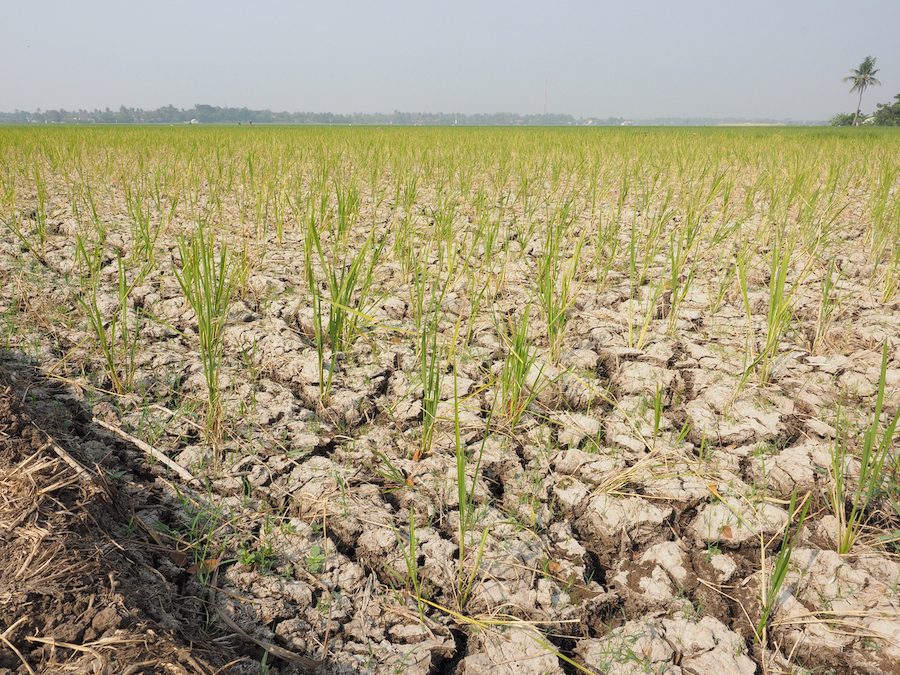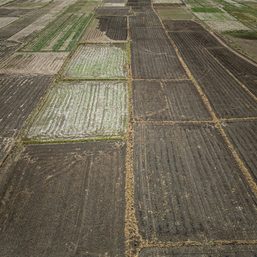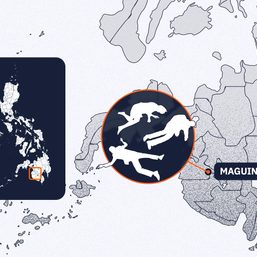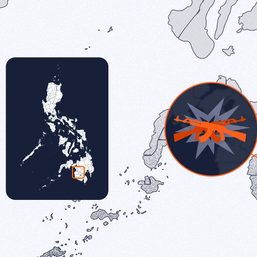SUMMARY
This is AI generated summarization, which may have errors. For context, always refer to the full article.

KORONADAL CITY, Philippines – Maguindanao del Sur in the Bangsamoro region has been placed under a state of calamity due to the effects of El Nino phenomenon, rendering losses in crops and livestock worth nearly P346-million over the past weeks.
On Monday, April 22, Governor Mariam Mangudadatu approved Resolution 039 passed by the provincial legislative board, placing the entire province under a state of calamity.
Mangudadatu said 20 of the 24 towns in her province have been severely affected by the prolonged dry spell and dwindling water sources. Nearly 6,000 farmers lost livelihood opportunities due to the prevailing harsh weather, she said.
Mangudadatu said the intense weather condition has taken its toll on corn and rice farms, banana plantations, livestock and poultry. “The supply of fresh water fish was also affected,” the governor added.
Maguindanao del Sur is the second province in the Bangsamoro Autonomous Region in Muslim Mindanao to declare a state of calamity.
On April 17, the provincial board of Basilan passed Resolution no. 01-2024, declaring the entire island province as under a state of calamity following losses in agriculture amounting to P315-million.
Basilan governor Hadjiman Salliman said people in Basilan rely mainly on agriculture as a source of income.
The long dry spell has destroyed hundreds of hectares of corn and rice fields and has affected the latex production of rubber plantations, which the island is known for, the governor said.
The island province consists of 11 towns and two cities – Isabela and Lamitan, the capital.
Since a month ago, local officials reported six incidents of bushfires destroying around 500 hectares of forest and rubber plantations.
In Datu Odin Sinsuat town in Maguindanao del Norte, local legislators declared the entire town as in a state of calamity, with Resolution No. 01- 2024 that was approved by Mayor Lester Sinsuat on Tuesday, April 23.
The town’s Disaster Risk Reduction and Management Council reported that the long dry spell has affected 17,548 households, 2,039 farmers lost their livelihood.
At least 1,370 hectares of farm lands – “40% rice farms, 40% corn farms and 20% high value crop farmers are affected,” the report said.
An official of the Ministry of Agriculture, Fisheries and Agrarian Reform (MAFAR) in the BARMM said they received reports that at least 26,000 farmers in the region were affected by the El Niño phenomenon.
Bahrain Piang, head of MAFAR Field Operation Division, said they are currently validating the report using the Registry System for the Basic Sector in Agriculture (RSBSA), a listing of farmers in the region that they use for monitoring and extending assistance.
“We are looking at a possibility that the number of affected farmers will increase,” he said, pointing out that the agency has a ready stock of buffer seeds that will be given to the farmers.
In initial assessments made in early April, BARMM rendered livestock losses worth around P60 million due to El Niño and around P1.5-million in agricultural crops, Piang said.
Most of the affected animals were goats in backyard farms. The grazing areas of these free-range goats have been damaged by the long drought, he said.
In their initial assessment, Piang said the prolonged dry spell has so far destroyed 19,731 hectares of corn farms and 5,472 hectares of rice land. It also affected 690 hectares of vegetable farms, 45 hectares of fruit trees and 56 hectares of cassava, a known staple in several communities in the region.
The Bangsamoro’s Disaster Risk Reduction and Management Council (DRRMC) has placed BARMM under a “blue alert” status in mid-April, when intense heat was observed to have been affecting farmlands.
A blue alert status sets into motion the region’s action plan on El Niño, said Minister Mohammad Yacob of the Ministry of Agriculture Food and Agrarian Reform (MAFAR).
He said the alert status activates the Bravo Emergency Preparedness and Response Protocol or the Bangsamoro Action Plan on El Niño.
This protocol requires that all disaster response councils of local government units conduct Rapid Damage Assessment and Needs Analysis in their respective areas. – Rappler.com
Add a comment
How does this make you feel?





















There are no comments yet. Add your comment to start the conversation.